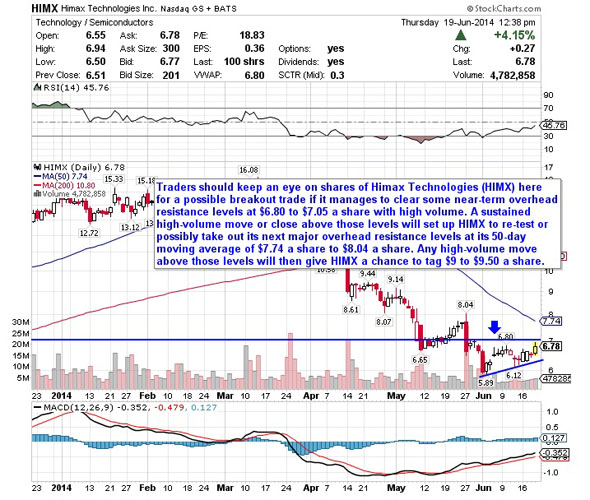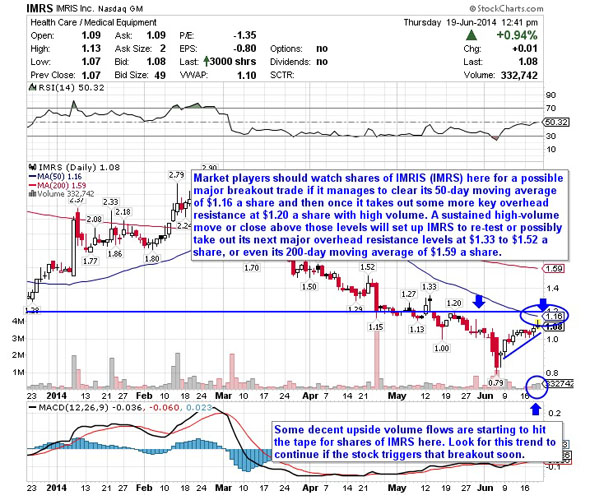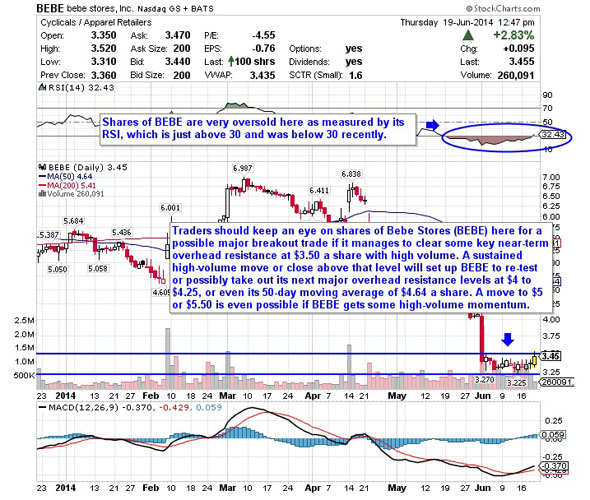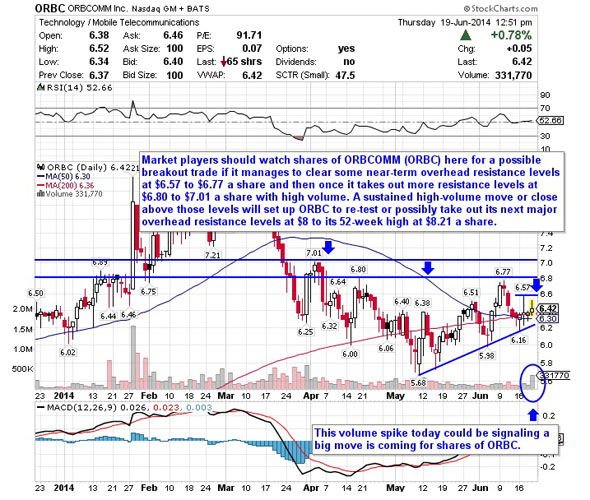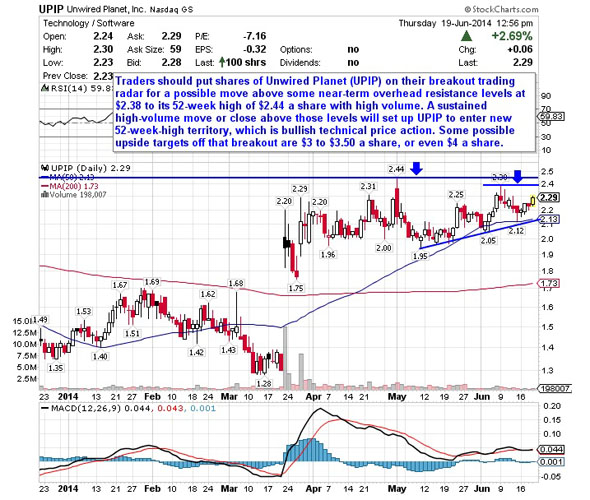DELAFIELD, Wis. (Stockpickr) -- Corporate insiders sell their own companies' stock for a number of reasons.
>>5 Stocks Set to Soar on Bullish Earnings
They might need the cash for a big personal purchase such as a new house or yacht, or they might need the cash to fund a charity. Sometimes they sell as part of a planned selling program that they have put in place for diversification purposes, which allows them to sell stock in stages instead of selling all at one price.
Other times they sell because they think their stock is overvalued and the risk/reward is no longer attractive. Some even dump their own stock because they have inside knowledge that a competitor is eating their lunch and stealing market share.
But insiders usually buy their own shares for one reason: They think the stock is a bargain and has tremendous upside.
>>5 Rocket Stocks to Buy for a Correction Week
The key word in that last statement is "think." Just because a corporate insider thinks his or her stock is going to trade higher, that doesn't mean it will play out that way. Insiders can have all the conviction in the world that their stock is a buy, but if the market doesn't agree with them, the stock could end up going nowhere. Also, I say "usually" because sometimes insiders are loaned money by the company to buy their own stock. Those loans are often sweetheart deals and shouldn't be viewed as organic insider buying.
At the end of the day, it's large institutional money managers running big mutual funds and hedge funds that drive stock prices, not insiders. That said, many of these savvy stock operators will follow insider buying activity when they agree with the insider that the stock is undervalued and has upside potential. This is why it's so important to always be monitoring insider activity, but it's twice as important to make sure the trend of the stock coincides with the insider buying.
>>5 Toxic Stocks You Should Sell This Summer
Recently, a number of companies' corporate insiders have bought large amounts of stock. These insiders are finding some value in the market, which warrants a closer look at these stocks. Here's a look five stocks whose insiders have been doing some big buying per SEC filings.
Prospect Capital
One financial services player that insiders are loading up on here is Prospect Capital (PSEC), which provides capital to middle-market companies and private equity financial sponsors for refinancing, leveraged buyouts, acquisitions, recapitalizations, later-stage growth investments and capital expenditures. Insiders are buying this stock into modest weakness, since shares are off by 8% so far in 2014.
Prospect Capital has a market cap of $3.5 billion and an enterprise value of $5.9 billion. This stock trades at a fair valuation, with a trailing price-to-earnings of 8.6 and a forward price-to-earnings of 8. Its estimated growth rate for this year is -19.1%, and for next year it's pegged at 1.6%. This is not a cash-rich company, since the total cash position on its balance sheet is $274.97 million and its total debt is $2.69 billion. This stock currently sports a dividend yield of 13%.
>>3 Big-Volume Stocks to Trade for Breakouts
The CEO just bought 100,000 shares, or about $1.03 million worth of stock, at $10.33 per share. That same CEO also just bought 100,000 shares, or about $1.03 million worth of stock, at $10.37 per share.
From a technical perspective, PSEC is currently trending above its 50-day moving average and just below its 200-day moving average, which is neutral trendwise. This stock has been uptrending for the last month, with shares moving higher from its low of $9.55 to its recent high of $10.48 a share. During that move, shares of PSEC have been making mostly higher lows and higher highs, which is bullish technical price action. That move has now pushed shares of PSEC within range of triggering a major breakout trade.
If you're bullish on PSEC, then I would look for long-biased trades as long as this stock is trending above some near-term support at $10.01 and then once breaks out above some near-term overhead resistance levels at $10.48 to $10.82 and then once it clears more resistance at $10.94 a share with high volume. Look for a sustained move or close above those levels with volume that hits near or above its three-month average action of 5.44 million shares. If that breakout materializes soon, then PSEC will set up to trend well north of $11 a share.
Jive Software
Another application software player that insiders are active in here is Jive Software (JIVE), which provides a social business software platform to businesses, government agencies, and other enterprises. Insiders are buying this stock into notable weakness, since shares have dropped 25% so far in 2014.
>>5 Stocks Under $10 Set to Soar
Jive Software has a market cap of $591 million and an enterprise value of $475 million. This stock trades at a reasonable valuation, with a price-to-sales of 3.95 and a price-to-book of 6.71. Its estimated growth rate for this year is 25.5%, and for next year it's pegged at 24.4%. This is a cash-rich company, since the total cash position on its balance sheet is $113.64 million and its total debt is just $7.8 million.
The CEO just bought 100,000 shares, or about $755,000 worth of stock, at $7.55 per share.
From a technical perspective, JIVE is currently trending above its 50-day moving average and below its 200-day moving average, which is neutral trendwise. This stock has been uptrending a bit for the last few weeks, with shares moving higher from its low of $6.75 to its recent high of $8.74 a share. During that move, shares of JIVE have been consistently making higher lows and higher highs, which is bullish technical price action. That move has now pushed shares of JIVE within range of triggering a near-term breakout trade post-earnings.
If you're in the bull camp on JIVE, then I would look for long-biased trades as long as this stock is trending above its 50-day at $7.84 or above $7.50 and then once it breaks out above some near-term overhead resistance levels at $8.74 to $8.98 a share with high volume. Look for a sustained move or close above those levels with volume that hits near or above its three-month average action of 726,636 shares. If that breakout triggers soon, then JIVE will set up to re-test or possibly take out its next major overhead resistance levels at its 200-day moving average of $9.78 to $11 to a share.
Insys Therapeutics
One specialty pharmaceutical player that insiders are in love with here is Insys Therapeutics (INSY), which develops and commercializes supportive care products. Insiders are buying this stock into major weakness, since shares have dropped sharply over the last three months by 38%.
>>5 Stocks Poised for Breakouts
Insys Therapeutics has a market cap of $1 billion and an enterprise value of $837 million. This stock trades at a reasonable valuation, with a trailing price-to-earnings of 20 and a forward price-to-earnings of 16. Its estimated growth rate for this year is 7.5%, and for next year it's pegged at 54.8%. This is a cash-rich company, since the total cash position on its balance sheet is $46.92 million and its total debt is zero.
A director just bought 20,000 shares, or about $490,000 worth of stock, at $24.54 per share.
From a technical perspective, INSY is currently trending below both its 50-day and 200-day moving averages, which is bearish. This stock recently broke out above some key near-term overhead resistance levels at $27.79 to $27.86 a share. That breakout is now starting to push shares of INSY within range of triggering a much bigger breakout trade above some key near-term overhead resistance levels.
If you're bullish on INSY, then I would look for long-biased trades as long as this stock is trending above $27.50 or above $25 and then once it breaks out above some near-term overhead resistance levels $30.81 to its 200-day moving average of $32.24 a share with high volume. Look for a sustained move or close above those levels with volume that hits near or above its three-month average action of 621,614 shares. If that breakout gets underway soon, then INSY will set up to re-test or possibly take out its next major overhead resistance levels at $40 to $43 a share.
Comverse
One technology player that insiders are jumping into here is Comverse (CNSI), which is a provider of software and systems enabling services for converged billing and active customer management, mobile Internet and value-added services. Insiders are buying this stock into major weakness, since shares have plunged by 31% so far in 2014.
Comverse has a market cap of $593 million and an enterprise value of $359 million. This stock trades at fair valuation, with a trailing price-to-earnings of 31 and a forward price-to-earnings of 23. Its estimated growth rate for this year is 8.7%, and for next year it's pegged at 15.3%. This is a cash-rich company, since the total cash position on its balance sheet is $210.10 million and its total debt is zero.
A director just bought 97,945 shares, or about $2.31 million worth of stock, at $23.40 per share. Another director also just bought 25,000 shares, or about $587,000 worth of stock, at $23.50 per share.
From a technical perspective, CNSI is currently trending above its 50-day moving average and well below its 200-day moving average, which is neutral trendwise. This stock has been uptrending for the last few weeks, with shares moving higher from its low of $22 to its intraday high of $26.50 a share. That uptrend has pushed shares of CNSI into breakout territory, since the stock has taken out some near-term overhead resistance levels at $25.31 to $25.74 and its 50-day moving average of $25.71 a share. That move is now starting to push shares of CNSI within range of triggering another big breakout trade.
If you're bullish on CNSI, then I would look for long-biased trades as long as this stock is trending above some near-term support at $24 and then once it breaks out above some near-term overhead resistance around $27 to $28 a share with high volume. Look for a sustained move or close above those levels with volume that registers near or above its three-month average action of 229,895 shares. If that breakout hits soon, then CNSI will set up to re-test or possibly take out its next major overhead resistance levels at $32 to $34 a share.
Martin Marietta Materials
One final stock with some decent insider buying is Martin Marietta Materials (MLM), which produces and sells aggregates for the construction industry. Insiders are buying this stock into major strength, since shares have traded higher by 32% so far in 2014.
Martin Marietta Materials has a market cap of $6 billion and an enterprise value of $7 billion. This stock trades at reasonable valuation, with a trailing price-to-earnings of 48 and a forward price-to-earnings of 24. Its estimated growth rate for this year is 44.5%, and for next year it's pegged at 43.7%. This is not a cash-rich company, since the total cash position on its balance sheet is $35.80 million and its total debt is $1.07 billion. This stock currently sports a dividend yield of 1.2%.
A director just bought 4,000 shares, or about $517,000 worth of stock, at $129.18 to $129.51 per share.
From a technical perspective, MLM is currently trending above both its 50-day and 200-day moving averages, which is bullish. This stock has been uptrending strong for the last month and change, with shares moving higher from its low of $115.19 to its recent high of $133.44 a share. During that uptrend, shares of MLM have been consistently making higher lows and higher highs, which is bullish technical price action. That move has now pushed shares of MLM within range of triggering a near-term breakout trade.
If you're bullish on MLM, then look for long-biased trades as long as this stock is trending above some near-term support levels at $127.50 or above its 50-day moving average of $124.15 and then once it breaks out above its 52-week high of $133.44 a share with high volume. Look for a sustained move or close above that level with volume that hits near or above its three-month average action of 662,588 shares. If that breakout begins soon, then MLM will set up to enter new 52-week-high territory, which is bullish technical price action. Some possible upside targets off that breakout $145 to $150 a share.
To see more stocks with notable insider buying, check out the Stocks With Big Insider Buying portfolio on Stockpickr.
-- Written by Roberto Pedone in Delafield, Wis.
RELATED LINKS:
>>Why Apple's Lower Price Tag Spells Bigger Gains in 2014
>>3 Big Stocks on Traders' Radars
>>5 Retail Stocks to Trade for Gains in June
Follow Stockpickr on Twitter and become a fan on Facebook.
At the time of publication, author had no positions in stocks mentioned.
Roberto Pedone, based out of Delafield, Wis., is an independent trader who focuses on technical analysis for small- and large-cap stocks, options, futures, commodities and currencies. Roberto studied international business at the Milwaukee School of Engineering, and he spent a year overseas studying business in Lubeck, Germany. His work has appeared on financial outlets including
CNBC.com and Forbes.com. You can follow Pedone on Twitter at www.twitter.com/zerosum24 or @zerosum24.
) offers a dividend yield of 3.42% based on Friday’s closing price of $74.21 and the company's quarterly dividend payout of 63.5 cents. The stock is up 2.6%year-to-date. Dividend.com currently rates Erie as “Neutral” with a DARS™ rating of 3,4 stars out of 5 stars.
) offers a dividend yield of 2.78% based on Friday’s closing price of $57.53 and the company's quarterly dividend payout of 40 cents. The stock is down 1.17% year-to-date. Dividend.com currently rates JPM as “Neutral” with a DARS™ rating of 3.4 stars out of 5 stars.
